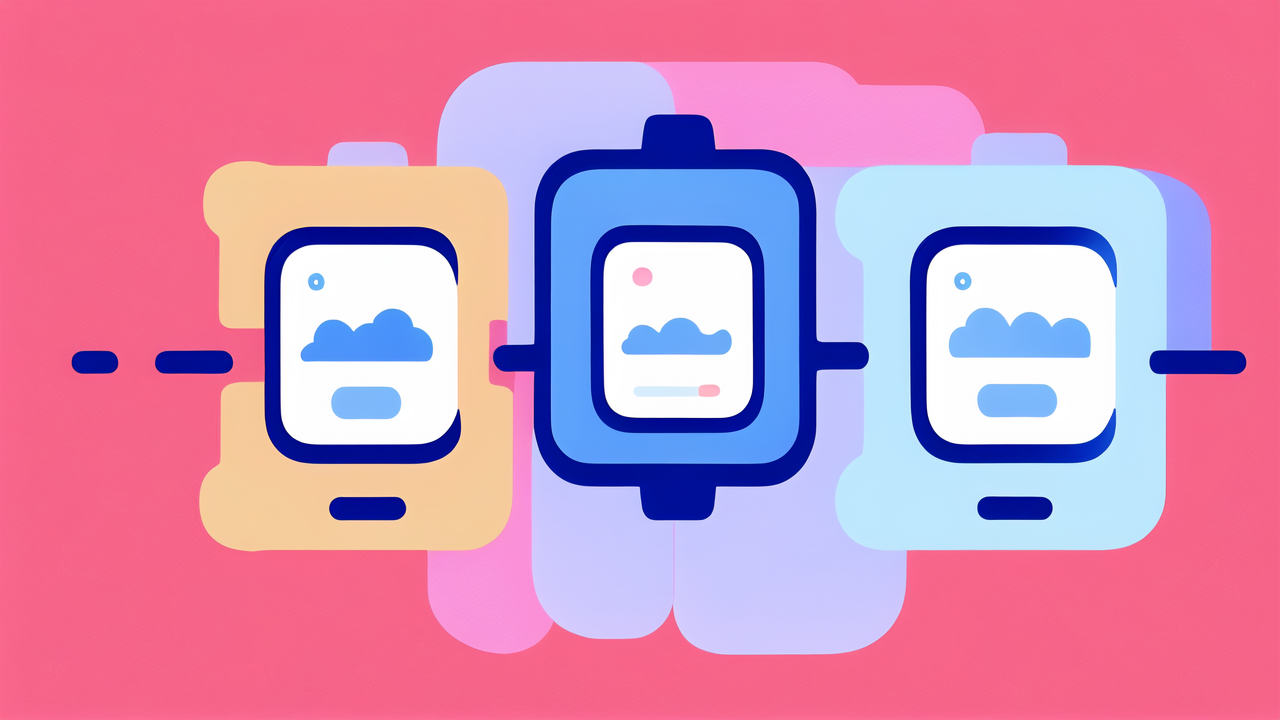Introduction to Pulse Smartwatches
Pulse smartwatches have become a revolutionary tool in the realm of personal health management. These advanced devices go beyond merely telling time, incorporating a variety of sensors that can track heart rate, measure physical activity, and even monitor sleep patterns. By syncing seamlessly with smartphones, they provide users with real-time insights into their health and fitness levels. This easy access to vital data not only encourages a healthier lifestyle but also enables early detection of potential health issues. As a result, pulse smartwatches have gained massive popularity in the United States, becoming a staple accessory for those looking to take charge of their well-being.

Historical Development of Digital Watches
The journey of the digital watch has been a dynamic one, beginning in the 1970s with the introduction of the first commercially available LED (Light Emitting Diode) timepiece. The novelty of having a watch that displayed time digitally rather than with hands was groundbreaking. In the 1980s, the digital watch underwent significant advancement, combining the functionality of calculators and incorporating features such as stopwatches and alarms. This era also saw the rise of LCD (Liquid Crystal Display) technology, which made reading time easier and more power-efficient.
As we moved into the 1990s and early 2000s, digital watches connected with personal digital assistants (PDAs) and started to integrate with the early stages of the internet, marking the preliminary steps towards smartwatches. However, it wasn't until the last decade that we saw the transformation of digital watches into smartwatches, capable of doing far more than time-telling. Today, they have become wearable computers with extensive fitness and health monitoring features, pushing the boundaries of what a watch can do and playing a pivotal role in the wellness and healthcare space.
The Rise of Health Monitoring Features
Health monitoring features have surged in popularity among digital watch capabilities. Initially focused on timekeeping and basic computations, modern digital watches now incorporate a wide range of sensors to track vital signs, including heart rate, blood oxygen levels, and even stress indicators. This advancement marks a shift from simple wrist-based gadgets to sophisticated health-oriented devices, capable of real-time health tracking and alerts. Additionally, these features enable users to measure their physical activity, monitor sleep patterns, and establish fitness goals, all geared towards a more informed and proactive approach to personal health. The integration of such features has not only appealed to fitness enthusiasts but also to individuals seeking to closely monitor specific health conditions. The demand for these advanced features has set the stage for digital watches to become an integral part of the health and wellness landscape.
Technological Advancements in Pulse Smartwatches
Pulse smartwatches have come a long way with technology pushing the bounds of what's possible on our wrists. These wearable devices now feature advanced sensors that accurately track heart rate and blood oxygen levels, providing real-time insights into one's health. Innovations like ECG functionality, which was once only available in medical facilities, are now standard in some high-end models, allowing for on-the-spot cardiac assessments. Enhanced connectivity has improved data syncing with smartphones and healthcare apps, enabling users and healthcare providers to monitor and analyze health data more efficiently. Furthermore, developers are integrating AI to offer personalized health insights and alerts, making pulse smartwatches proactive health guardians rather than just passive trackers. The battery life, too, has witnessed enhancements, supporting these advanced functions without frequent charging. With ongoing research and development, the future looks promising for even more refined health-oriented features.
Impact of Pulse Smartwatches on Healthcare Delivery
Pulse smartwatches are transforming healthcare by offering real-time data to both patients and doctors. This wearable technology enables continuous monitoring of vital signs like heart rate, blood oxygen levels, and physical activity. Such capabilities have made it easier to detect abnormalities early, often before more severe symptoms arise. The convenience and connectivity of pulse smartwatches facilitate remote patient monitoring (RPM), allowing for patient care outside traditional clinic settings. As a result, there is a potential for increased patient engagement, better management of chronic conditions, and reduced hospital readmissions. Additionally, these devices can send alerts and health updates, which may help in quicker response in emergencies. Collectively, these impacts reveal the significant role pulse smartwatches play in modernizing and improving healthcare delivery.
Patient Outcomes and the Role of Wearable Technology
Wearable technologies like pulse smartwatches are transforming patient outcomes significantly. With real-time data collection and analysis, these gadgets empower individuals to monitor their health proactively. This includes tracking vital signs such as heart rate, activity levels, and sleep patterns. Such insights can encourage lifestyle changes that contribute to better health. Moreover, wearable technology plays a crucial role in remote patient monitoring (RPM), enabling healthcare providers to track patient data from afar. This can result in timely interventions, potentially reducing hospital admissions and healthcare costs. The ability for patients to engage actively with their health metrics also fosters a greater sense of control and responsibility for their well-being. As wearable technology continues to advance, its role in enhancing patient outcomes presents promising opportunities for the future of healthcare.
Comparison with Traditional Health Monitoring Devices
The advent of pulse smartwatches has ushered in a new era for health monitoring, providing significant advances over traditional devices. Traditional health monitoring equipment, like blood pressure cuffs and glucose meters, are often bulky and require manual operation, which can be inconvenient for continuous tracking. Pulse smartwatches, on the other hand, offer real-time monitoring with the advantage of being wearable and convenience.
They are equipped with sensors that can track heart rate, oxygen saturation, and even stress levels, adding depth to health metrics that traditional devices cannot measure continuously. Additionally, smartwatches can seamlessly integrate with mobile apps to store and analyze health data over time, offering insights into long-term health trends that static devices cannot provide. This connectivity also allows for alerts and notifications for immediate health interventions, something that traditional monitors lack.
Although traditional devices are still used for specific diagnostic purposes and can provide more accurate readings for certain health metrics, the real-time monitoring and user-friendly aspect of pulse smartwatches are transforming the way personal health is tracked on a daily basis.
Regulatory Environment and Privacy Concerns
As pulse smartwatches become more prevalent, their interaction with the regulatory environment and privacy concerns takes center stage. In the United States, agencies like the Food and Drug Administration (FDA) oversee the approval of medical devices, which now includes certain health monitoring features in smartwatches. However, as these devices collect sensitive health data, they must also comply with privacy regulations such as the Health Insurance Portability and Accountability Act (HIPAA).
Manufacturers must ensure robust data encryption and secure user authentication to protect personal health information (PHI). This raises questions about data ownership and the consent process for data sharing. With breaches and cybersecurity threats a constant risk, ongoing vigilance is essential. The balance between innovation, user benefits, and privacy rights remains a key area of debate as this technology continues to integrate more deeply into healthcare practices. Ensuring transparency and giving users control over their data are steps in addressing these legitimate concerns.
Future Trends and Innovations in Smartwatch Technology
As we look towards the horizon, the future of smartwatch technology is poised for groundbreaking innovations. Expect to see enhancements in battery life, enabling users to enjoy more extended periods of health monitoring without the need for frequent charging. Artificial intelligence (AI) will become increasingly intertwined with smartwatches, leading to more personalized health insights and alerts. We'll likely witness the rise of non-invasive glucose monitoring, a significant breakthrough for diabetic patients. Furthermore, there will be a drive towards universal compatibility, with smartwatches being designed to seamlessly integrate across various healthcare systems and electronic health records. The potential for remote patient monitoring will expand, particularly for chronic conditions, giving healthcare professionals a continuous stream of patient data. Lastly, there is a strong push for more rugged and durable designs that can withstand extreme conditions, making them suitable for a broader range of activities and environments. These innovations will not only enhance the capability of smartwatches but also transform them into an indispensable component of proactive health management.




Leave a comment
This site is protected by hCaptcha and the hCaptcha Privacy Policy and Terms of Service apply.